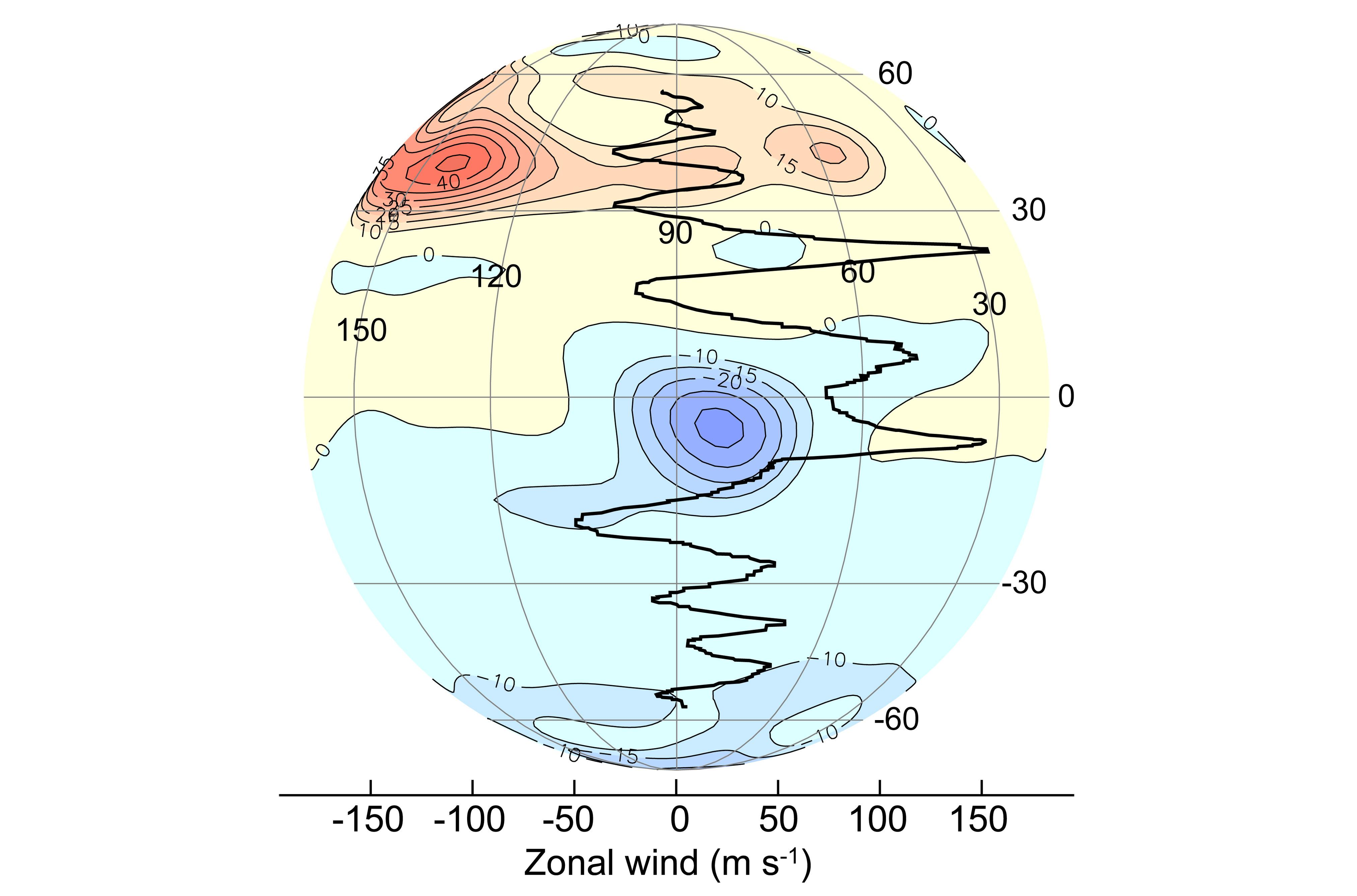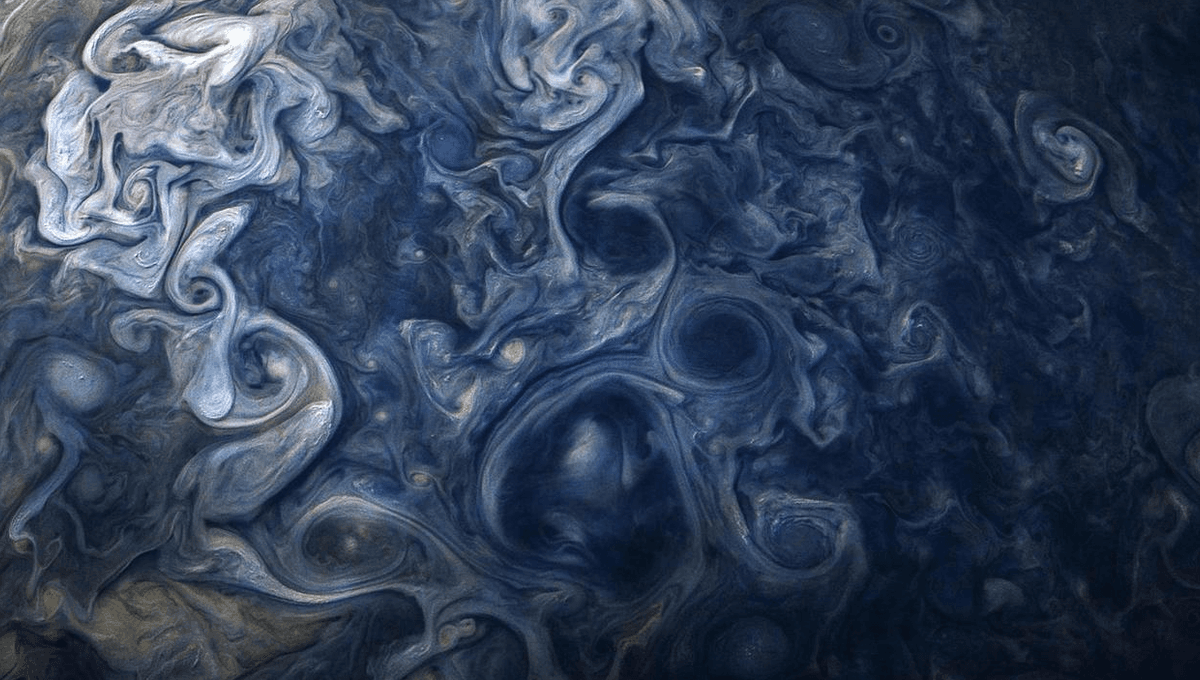Four hundred years after the discovery of Jupiter’s Great Red Spot a spot of a different color has been added, but its story is a bit more complicated.
The first thing to know about the Great Blue Spot is that it does not emit or reflect light at around 450 nanometers, and therefore is not actually blue. Nor, despite our common association of blue with cold, is it related to Jupiter’s Great Cool Spot.
Instead, the blueness appears on maps of the magnetic field. We can’t see magnetism, let alone in color, so a tradition has evolved that north magnetic poles should be portrayed as red and south poles as blue. This has nothing to do with the rare cases where magnetism does affect color, such as when iron-oxide nanoparticles present a rainbow spectrum depending on magnetic field strength.
In the bar magnets many of us played with as children, this leads to a simple half-and-half marked with paint, but real-world magnetic fields are considerably more complex. Variations in field strength lend themselves to be shown in deeper or paler shades, as in the map of Jupiter’s field below.

The Great Blue Spot is magnetically very south, but is located near Jupiter’s equator.
Image Credit: NASA/JPL-Caltech/SwRI/John E. Connerney
Notably, Jupiter’s magnetic field is not like Earth’s, where the north and south poles are almost directly opposite each other, with both relatively close to the geographic pole. Even on Earth, there are strange anomalies, but one of the first things Juno revealed about Jupiter is that its field is stranger still, which turned out to include the Great Blue Spot.
The first signs of this came in the concentrations of north and south magnetic fields revealed in the map above. With Jupiter’s Great Red Spot being one of its most familiar and enduring features (even if it has been shrinking recently) it was inevitable the south magnetic anomaly would be dubbed the Great Blue Spot.
As reported this week, the Great Blue Spot has an atmospheric jet associated with it, demonstrating that the magnetic field anomaly is shaping the giant planet’s atmosphere. Exactly what is driving this remains unclear, but it does prove the Blue Spot matters.
The Great Blue Spot is also the place where Jupiter’s magnetic field is changing the fastest. Back in 2019, Dr Kimee Moore of Harvard University said in a statement: “It is incredible that one narrow magnetic hot spot, the Great Blue Spot, could be responsible for almost all of Jupiter’s secular variation, but the numbers bear it out.”
The causes of the Great Blue Spot have yet to be fully explained. There is no exact match in the Northern Hemisphere, with a long magnetic band instead and various other non-dipole regions. This has at least saved astronomers from needing to come up with a name that isn’t “The other Great Red Spot”.
Jupiter’s magnetic field is thought to be a consequence of the highly conductive ocean of metallic hydrogen at its core. Exactly what it is about the metallic hydrogen that leads to such complexity high above is still a matter of speculation. Even when the Galileo spacecraft plunged into Jupiter’s atmosphere, it was never going to get remotely deep enough to collect answers before being crushed by the mighty pressure.
So far, two things we have learned about the Spot are that it is migrating eastward, and is associated with zonal winds around 3,500 kilometers (2,100 miles) deep within the gas planet.
Explaining the Spot is considered enough of a priority that it’s the focus of six fly-bys in Juno’s extended mission along with a greater focus on the moons.


